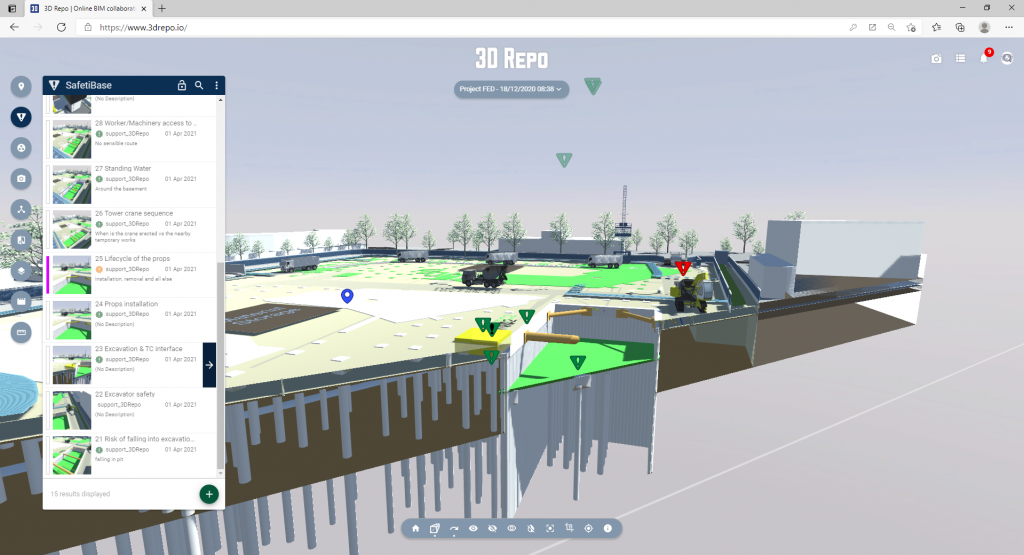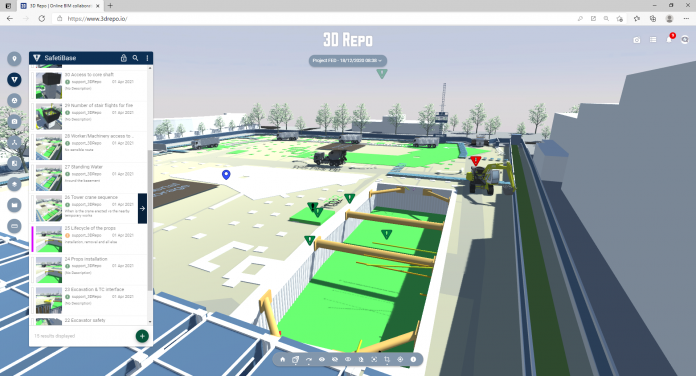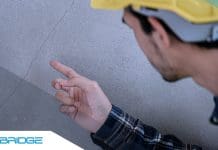Despite the name, 3D Repo is championing the use of 4D in construction, whether for health and safety, planning, BIM or creating digital twins. The BIM and digital twin web platform specialist is involved with several industry collaborations that can ultimately help make projects safer, faster and reduce costs
3D Repo’s most recent 4D venture is starting work on a new, customisable health and safety training tool that will replace generic training videos with live walkthroughs of site-specific solutions. Working alongside joint venture Balfour Beatty Vinci (BBV) and 4D specialist Freeform, the tool will be coordinated with the Health & Safety Executive (HSE) Discovering Safety Programme.
Funding for the new 4D health and safety tool was provided through a Small Business Research Initiative (SBRI) innovation competition funded by HS2 and managed by Innovate UK. The competition aims to deliver innovation that will drive project efficiencies and process for use during the design and construction phase of HS2.
This isn’t 3D Repo’s first venture with BBV and HS2. In November last year, PBC Today reported on another 4D health and safety initiative by the partnership, using Mission Room’s technology to create a 360° visualisation of the West Midlands BBV construction site within HS2’s Area North route.
The site was recreated in SafetiBase 4D, another 3D Repo collaboration, and displayed on the 360° screens at a dedicated space within the Birmingham site, allowing site teams to identify, record and resolve site hazards as part of a virtual construction sequence evaluation and training. The teams can then go on-site and explore, discuss and agree the project’s delivery sequence, identify safety issues and agree on how to resolve them.
SafetiBase goes 4D
SafetiBase was created in 2018 to provide an online platform that tracks and then analyses project risks and health and safety issues. The consortium is made up of 3D Repo, Atkins, Mott McDonald, Laing O’Rourke, Costain, Bentley, Tideway and HS2 Ltd, with funding from the Infrastructure Industry Innovation Partnership (i3P).
4D data is integrated from Synchro into 3D Repo and allows the team to democratise, visualise and analyse the output of 4D modelling to the wider project team. This enables full cloud-based collaboration with issues and risks linked to the 4D timeline.
At the time SafetiBase was launched James Bowles, 4D consultant and founder of Freeform, said: “By creating a project risk register/database directly from the project models, this is a powerful next step in how we work with teams. Up to now, we’ve been running planning, safety and logistics workshops using ‘just’ 4D models. Now we have the option to use SafetiBase, we’ll be rolling this out on our current and future projects.”
The potential of 4D BIM
4D BIM is construction sequencing or, as the NBS, describes it: “4D BIM adds an extra dimension of information to a project information model in the form of scheduling data.”
4D BIM effectively takes the data that would typically be contained within a Gantt chart, which maps the sequence of events to complete a project.
By overlaying the time element on to a BIM model, project planners can create an accurate project programme, which with the added visualisation and graphical representation afforded by the BIM model, shows much more clearly how the project will develop.
This means issues such as obstructions to the site during the construction phase or safety hazards can be tracked and rectified in the design phase, rather than the construction stage, preventing higher costs, extending the build time or, worst of all, a worker injury or fatality.

4D BIM meets digital twins
Digital twins – a virtual replica of a built asset brought to life by real-time data – are the new BIM. Often overcomplicated, digital twins can be as simple as a spreadsheet with live data feeds via Application Programming Interfaces (APIs), such as 3D Repo.
But the transformative potential of digital twins lies in the ability to connect them to provide deeper insights across a wider context. A virtual replica of a project could provide a single version of the truth, where all design-build-operate data can be accessed and viewed online on-demand.
So, how can 4D BIM and digital twins work together?
Many BIM projects are already using 4D BIM, creating virtual construction sequences, which helps improve planning and communication across a wide array of stakeholders. Bringing a digital twin into the mix offers additional short and long-term benefits across the entire asset lifecycle.
Digital twins can test construction sequencing and logistics scenarios, verify the as-built situation or run ‘what if’ simulations using live data from building sensors to optimise performance and sustainability.
If all this real-time project data is pushed regularly to a platform like 3D Repo, it can provide an accessible record of the entire project. This not only improves visibility and cost management if the data is structured correctly but it can also form the basis of a full digital twin for use in long-term asset operation and maintenance, allowing facilities management teams to move away from traditional computer-aided FM systems.
The ability to connect different data sources and share real-time information is essential in the development of a digital twin. And the fastest and easiest way to do this is via APIs.
3D Repo’s open API gives users access to a wealth of data stored on its servers, it permits a growing list of integrations including Asite, Procore, Luminova, Dynamo and, most recently, Microsoft Power BI.
The Power BI integration exploits 3D Repo’s free-to-download embeddable viewer, where users can pull models from software like Revit, Navis, IFC, Civil 3D, or Bentley DGN into interactive dashboards to share with colleagues.
By harnessing the power of existing software to create meaningful 4D digital twins, we can all reap the benefits of reduced construction costs, faster project completion, improved on-site health and safety, better coordinated facilities management and a safer environment for building occupants in the longer term.
Continue reading about 4D and the future of Digital Twins in the free white paper here.
3D Repo
Twitter: @3DRepo
LinkedIn: 3D Repo














